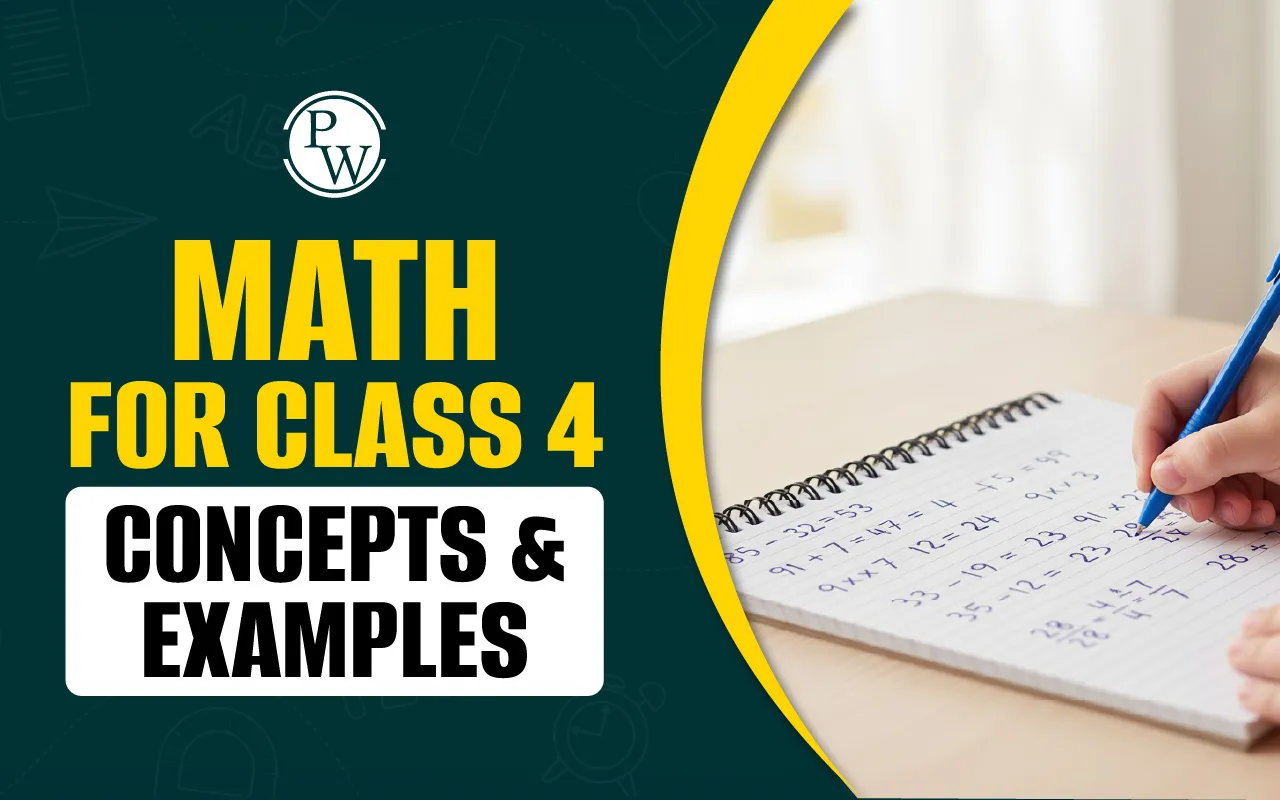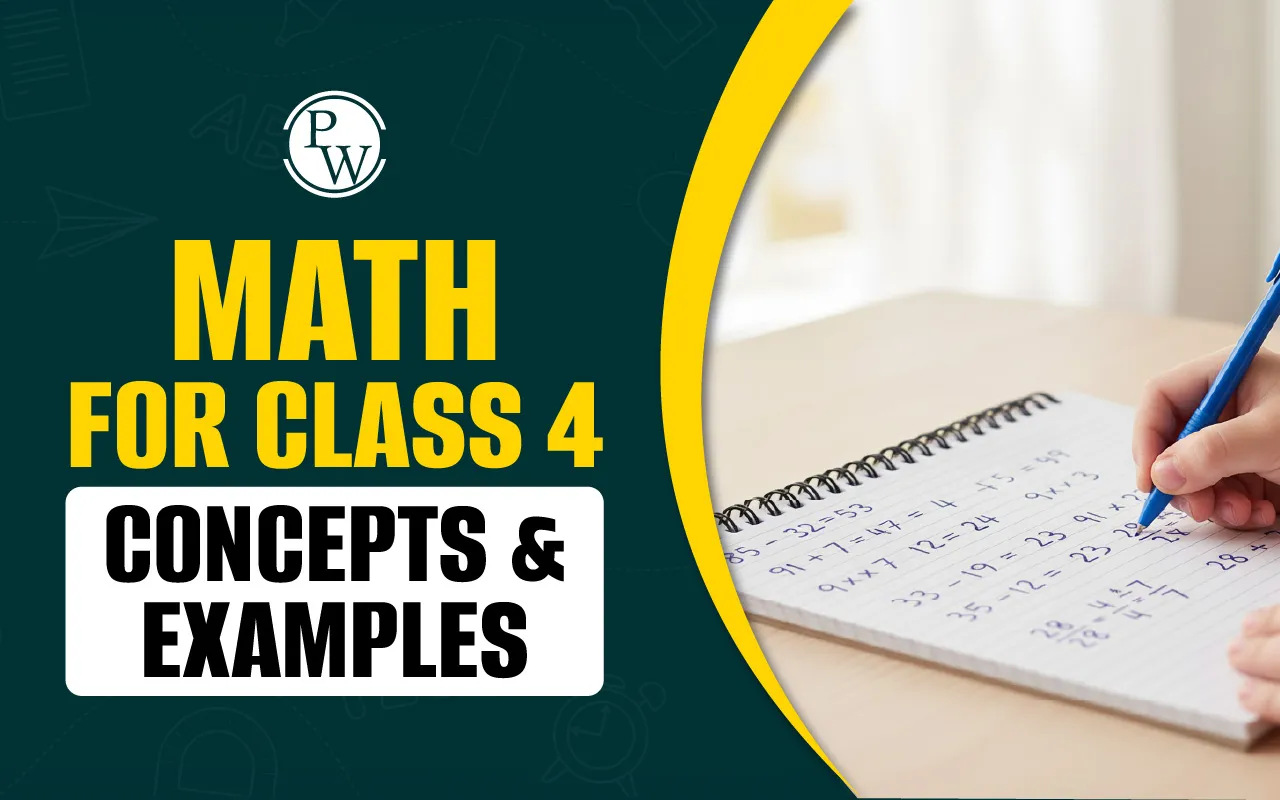

4th Class Maths CBSE
The CBSE Class 4 Maths curriculum helps children develop number sense and apply maths to everyday situations. Students learn topics like place value up to 10,000, multiplication, division, time, measurement, and data handling. The focus is on making maths easy to understand and useful in daily life. With the help of activities, stories, and puzzles, math for class 4 becomes engaging and enjoyable. Let us now take a look at the complete syllabus below.
Read More: What is Mental Maths?
CBSE Class 4 Maths Syllabus
The 4th class CBSE Maths textbook, Maths Mela (2025), includes 14 chapters. These chapters focus on practical understanding, reasoning, and logical thinking. The topics are designed according to the National Education Policy (NEP) 2020 and the National Curriculum Framework (NCF) 2023. Here is the list of chapters covered in the CBSE Class 4 Maths syllabus based on the official NCERT textbook:
CBSE Class 4 Maths Syllabus |
|
|---|---|
|
Chapter |
Topics |
|
Chapter 1 |
Shapes Around Us |
|
Chapter 2 |
Hide and Seek |
|
Chapter 3 |
Pattern Around Us |
|
Chapter 4 |
Sharing Around Us |
|
Chapter 5 |
Sharing and Measuring |
|
Chapter 6 |
Measuring Length |
|
Chapter 7 |
Cleanest Village |
|
Chapter 8 |
Weigh it, Pour it |
|
Chapter 9 |
Equal Groups |
|
Chapter 10 |
Elephants, Tigers, and Leopards |
|
Chapter 11 |
Fun with Symmetry |
|
Chapter 12 |
Ticking Clocks and Turning Calendar |
|
Chapter 13 |
The Transport Museum |
|
Chapter 14 |
Data Handling |
Concepts in CBSE Class Maths Syllabus
The 4 class math syllabus focuses on building a solid understanding of concepts through real-life applications. Each chapter targets specific skills and gradually increases complexity as students develop confidence
Shapes Around Us
-
Identify and describe 2D and 3D shapes
-
Understand edges, corners, and faces
-
Compare and sort shapes in the environment
Hide and Seek
-
Learn directions and spatial positions
-
Read and follow simple maps
-
Improve observation through spatial tasks
Patterns Around Us
-
Recognise and complete number and shape patterns
-
Predict sequences logically
-
Create designs using mathematical rules
Thousands Around Us
-
Read and write numbers up to 10,000
-
Understand place value in large numbers
-
Compare, order, and round off numbers
Sharing and Measuring
-
Develop an early understanding of division
-
Explore equal sharing through examples
-
Link sharing with measurement tasks
Measuring Length
-
Use standard units like metre and centimetre
-
Compare and convert measurements
-
Estimate and measure accurately
The Cleanest Village
-
Collect and record simple data
-
Use tables and categories to analyse information
-
Estimate based on real-life context
Weigh it, Pour it
-
Measure weight and volume using standard units
-
Compare quantities like kilograms and litres
-
Practice estimation and real-life measurement
Equal Groups
-
Understand multiplication as repeated addition
-
Use grouping and sharing to divide
-
Apply basic multiplication and division to solve problems
Elephants, Tigers, and Leopards
-
Apply numbers to real-world contexts
-
Group and compare data
-
Use reasoning to solve story-based problems
Fun with Symmetry
-
Explore symmetry in shapes and drawings
-
Complete mirror images
-
Use folding and drawing to understand symmetry
Ticking Clocks and Turning Calendar
-
Read time in hours and minutes
-
Understand daily schedules and time intervals
-
Use calendars to plan days and months
The Transport Museum
-
Compare distances and speeds
-
Solve travel-related problems
-
Apply maths to real-life transport examples
Data Handling
-
Collect and organise data through surveys
-
Use pictographs and bar charts
-
Answer questions based on visual data
This approach to math for class 4 ensures that students are not only solving sums but learning to think, reason, and apply maths in their surrounding
Why Learning Mental Maths Important in Class 4?
Mental maths for Class 4 helps students improve their thinking speed, accuracy, and confidence. It allows them to solve problems in their mind without needing to write everything down.
In 4th grade math, students are encouraged to:
-
Perform quick addition and subtraction mentally
-
Use multiplication tricks like tables, doubling, or splitting numbers
-
Estimate answers before solving
-
Break big problems into smaller, manageable steps
Regular practice builds a strong foundation in math for Class 4 and prepares students for real-life tasks like shopping, managing time, or handling money. Parents and teachers can support this by giving mental quizzes, playing number games, and encouraging quick thinking during everyday activities.
How Can Parents Help with Class 4 Maths?
Parents play a big role in helping children succeed in math for Class 4. Learning at home becomes easier when parents use simple, daily situations to connect with maths. You can encourage your child to:
-
Practice mental maths while shopping or cooking
-
Talk about time, dates, and distances during daily routines
-
Play math-based games like puzzles, number cards, or board games
-
Ask your child to explain how they solved a problem instead of just checking the answer
-
Use real-life examples to support topics like measurement, symmetry, or data
-
Praise effort, not just correct answers, to build confidence
By staying involved and creating a positive learning environment, parents can make 4th class CBSE maths more meaningful and stress-free for their children.
Also Read: Maths Puzzles Questions and Answers
Make Maths Easier and Enjoyable for Your Child with PW CuriousJr
Does your child find maths tricky or lose focus when lessons get tougher? Many students struggle with numbers, shapes, and measurements when doubts remain unsolved or concepts move too quickly. PW CuriousJr Maths Online Classes make learning simple, engaging, and easy to follow for students. Here’s how our classes support your child’s learning:
-
Dual-teacher model for instant help and personal attention
-
Interactive lessons using real-life examples and visuals
-
Homework and revision support for regular practice
-
Curriculum aligned with CBSE, ICSE, and state boards
-
Regular progress reports to keep parents updated
With personalised guidance and step-by-step learning, children build strong math foundations and start enjoying problem-solving instead of feeling stuck. Book a demo session today and help your child become confident and curious in maths!
